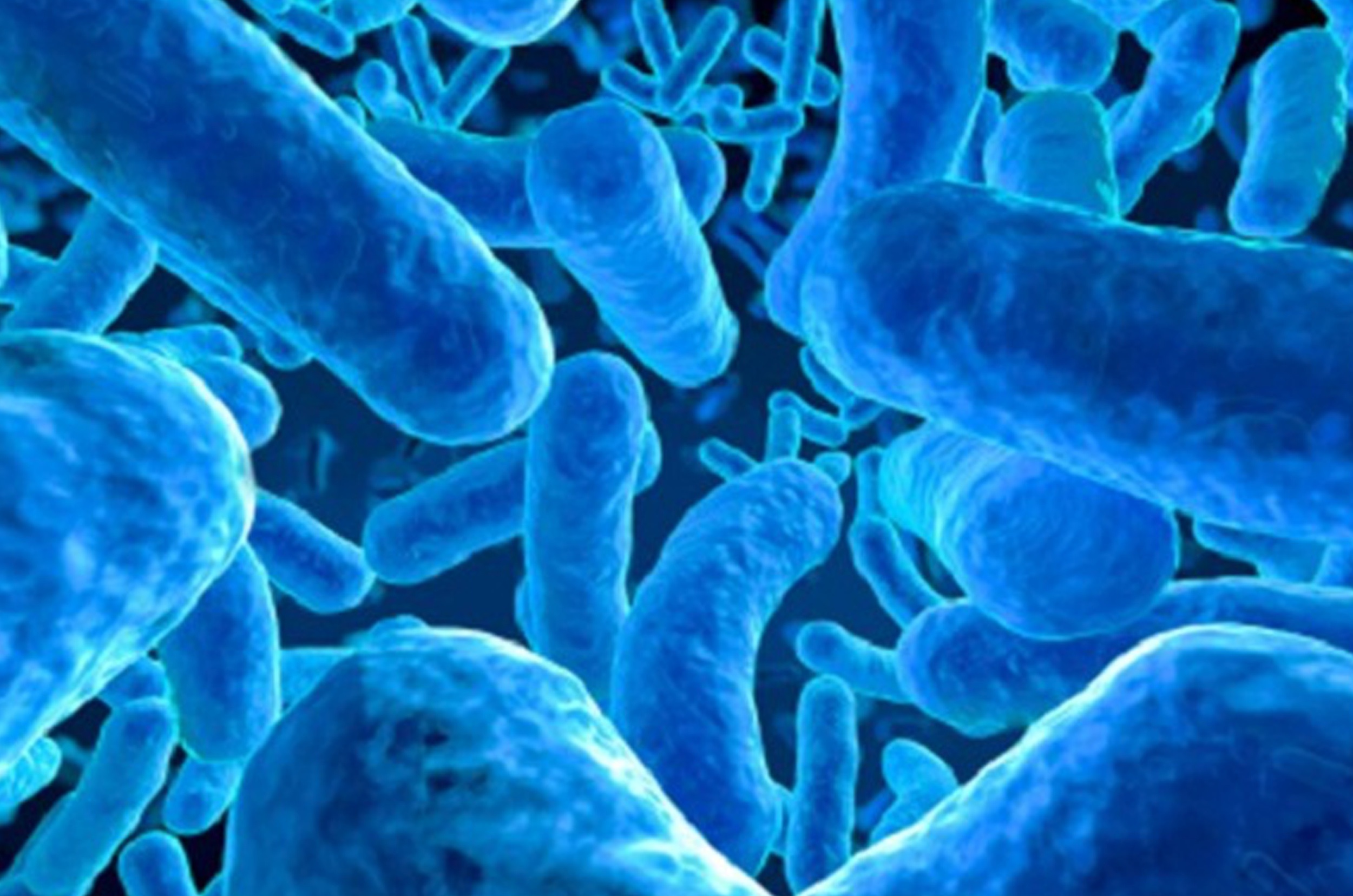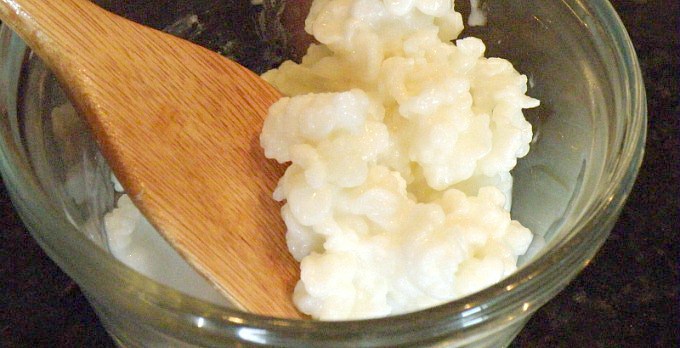While kefir has only recently gained popularity in the west, this tangy probiotic drink has been revered and treasured since ancient times in the east. Not quite yogurt, and not quite buttermilk, kefir is basically milk, cultured by an odd-looking, and oddly-named, living organic collective of yeasts and bacteria. Aside from its numerous other nutritious qualities, kefir can provide many times the probiotics of other cultured milk products; and the best quality kefir can be easily made at home.
Traditionally made with milk, kefir can actually be beneficial for those with lactose intolerance or dairy allergies, because it takes care of the elements that your body is not dealing with properly. Non-dairy liquids can also be cultured in the same way, but their health benefits are not quite equal to those of the traditional dairy product.
The magic of kefir starts with a gooey symbiotic colony of yeast and bacteria that looks remarkably like cauliflower. When this “grain” is added to room temperature milk, the lactose is broken down into lactic acid, probiotics multiply, and milk is transformed into a super nutritious, tangy, effervescent beverage.

A fascinating history
The use of kefir dates back thousands of years in the Caucasus mountain region, spanning southern Russia to the northernmost parts of Georgia and Azerbaijan. Legend has it that the prophet Mohammed brought kefir grains to the Orthodox Christians of the region, showing them how to use it, and explaining its beneficial qualities. The Muslims, a minority religion in the region, so treasured the cultured milk they considered kefir a gift from God (Allah).
It was believed that in order to maintain its effectiveness, the culture could not be shared. It thus remained a closely-guarded secret within the Caucasus Mountains for many generations, ensuring health and longevity of the region’s people. In the early 1900s, however, Russian immunologist Dr. Ilya Metchnikoff began investigating the factors behind their exceptional longevity, and concluded that the cultured milk, a staple of their diet, was key.
Success
You are now signed up for our newsletter
Success
Check your email to complete sign up
Modern studies have shown kefir to be effective in improving digestion, reducing blood pressure and cholesterol, preventing cancer, improving immunity, and reducing asthma and allergies. The Northern Caucasus region is known to have one of the highest ratios of centenarians in the world.
After the secret of kefir was publicised in Dr. Metchnikoff’s book The Prolongation of Life, the All Russian Physician’s Society set out to gain possession of this seeming panacea for use in medical treatment. A tale of deceit and deception ensued.
The Society commissioned a pair of brothers from a local dairy to secure kefir grains from the Caucasus tribes. When the grains could not be purchased, the brothers turned to trickery, sending a beautiful female employee to seduce the tribal prince. Although the prince succumbed to her charms, he would not yield the precious kefir grains.
The woman left empty-handed, but was brought back by tribesmen intent on forcing her to marry the prince. Her employers launched a rescue mission and freed her from an unwanted marriage, but now the woman had a genuine grievance against the prince to use as leverage. She brought the case to the Czar, who ordered the prince to pay retribution. She would accept nothing less than 10 lbs of kefir grains. With that, the gift of kefir began its spread throughout the world.

A probiotic super star
While kefir is beneficial in many areas, it is most highly prized for its probiotic prowess. Probiotics are beneficial microorganisms that promote digestion and mental health, aid in weight management, and stimulate the immune system. While yogurt is better known in the West, kefir provides a much more diverse source of probiotics. Most yogurts contain only four to six different culture strains, while kefir boasts up to 61 different strains of beneficial bacteria and yeasts.
The digestive comfort gained through consuming kefir may have contributed to its name, derived from the Turkish word keyif, meaning “pleasure.” The probiotic Lactobacillus kefiri has been found to protect against harmful bacteria like Salmonella, Helicobacter pylori and E. coli. and the carbohydrate kefiran is also known to have antibacterial properties.
Because probiotics help restore the balance of friendly bacteria in your gut, consuming kefir regularly does much to improve digestion and reverse various digestive disorders, including irritable bowel syndrome, ulcers, constipation and diarrhea.
Lactose intolerance is a problem for many adults who can no longer break down lactose on their own. Because kefir contains many bacteria and enzymes that convert lactose into lactic acid, it is generally well tolerated by all. Since the plentiful bacteria and yeast in kefir can colonize your gastrointestinal tract and stay there for a long period of time, lactose intolerance may actually be reversed.
Culturing kefir at home
Although kefir can be purchased at most groceries these days, they often contain sugar, and are of inferior quality. The best kefir is made fresh at home. Homemade kefir can give you four to six times the probiotics for a fraction of the price. To get started, the primary concern is finding kefir grains. They can be ordered online, but they aren’t especially fond of travel. You can buy dried grains, but reconstituting them can be tricky.
The best option is to find someone near you who is culturing kefir. The grains, as we’ve established, are a living organism, and they multiply and grow as long as they are being used. So anyone with a healthy kefir culture will surely have some to spare. Craigslist, or local Facebook groups are good places to search.
Milk Kefir instructions
- To rehydrate dry grains, place them in a small amount of fresh milk. Keep the milk at room temperature while your grains reconstitute. The kefir will not be active right away, so be sure to change the milk before it goes sour. Once it looks like a small clump of cauliflower, it should begin to culture your milk. You will see some small bubbles and the milk will become thick and viscous. Discard the first small batch and start fresh once the grain is producing.
- Start with 2 cups of fresh cow or goat milk (whole, 2% or 1%). Skim or ultra-pasteurized are not recommended. Raw milk, if you can get it, is very good. For thicker kefir, add extra cream.
- In a ball-jar, drop your fresh or reconstituted grain into the milk and put the lid (preferably plastic) on loosely.
- Keep the jar at room temperature and out of direct sunlight. A cupboard or countertop work equally well. You can agitate the milk, but it is not necessary.
- Under very average conditions, culturing should take about 24 hours. Raw milk can take longer (up to 3 days), while summer temperatures or increasing amounts of grain will speed up the process.
- When the kefir is ready, you’ll begin to see bubbles at the bottom of the jar, and it will be thick throughout (though not as thick as yogurt). It will have a slightly sweet, mostly tangy flavor and may be somewhat effervescent.
- Many suggest straining the milk with a plastic mesh strainer, but you can achieve the same effect with less mess by simply removing the grains from the liquid with a plastic fork. Place the grains in fresh milk to start again. There is no need to rinse the grains, unless your milk has gone sour and smells bad. If this has happened, be sure to use non-chlorinated, room-temperature water to carefully rinse away the bad milk.
- Enjoy your kefir plain, in a fruit smoothie, or in salad dressing. Although cooking it will destroy the probiotics, it can also be used in place of buttermilk or sour cream in baking.
- To slow the process for whatever reason, simply store the whole thing in the fridge. Cultured milk can last up to two weeks without harming (starving) the grains. For a longer pause, you can place your grains in fresh milk directly in the fridge, slowing the fermentation considerably and yielding a sweeter, smoother kefir. If you cannot attend to your grains for a long period, they can be preserved by drying them. Place the grains on parchment paper and cover with a paper towel to prevent contamination. When they are completely dry, place them in a jar with a loose fitting lid until you are ready to restore them. They are likely to smell like very ripe cheese at this point.
- As your grains grow, you can use them to produce more kefir (by increasing the amount of milk per batch) or you can divide them to share with others. The grains will naturally divide as they grow, or you can gently pull them apart. Do not squish them.
- Kefir grains are alive and sensitive. Remember to keep them out of direct sunlight, Avoid using metal utensils or containers in contact with kefir grains, and avoid contact with chlorinated water.
- You can adapt your grains to be used with non-dairy milks like oat milk, coconut milk, almond milk, or cashew milk. Start out with equal parts of dairy and non-dairy, and gradually reduce the amount of dairy to allow your grains time to adjust to a new diet. It should be noted, however, that consuming kefir may restore balance in your gut, enabling you to tolerate milk products even if you couldn’t before.
- Good luck!














